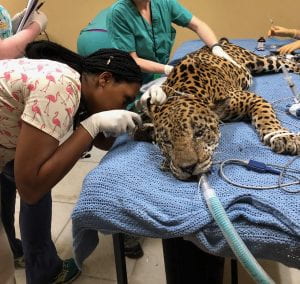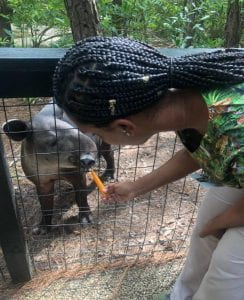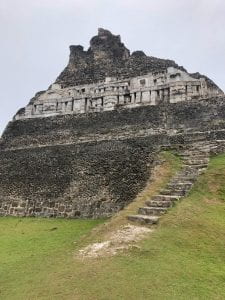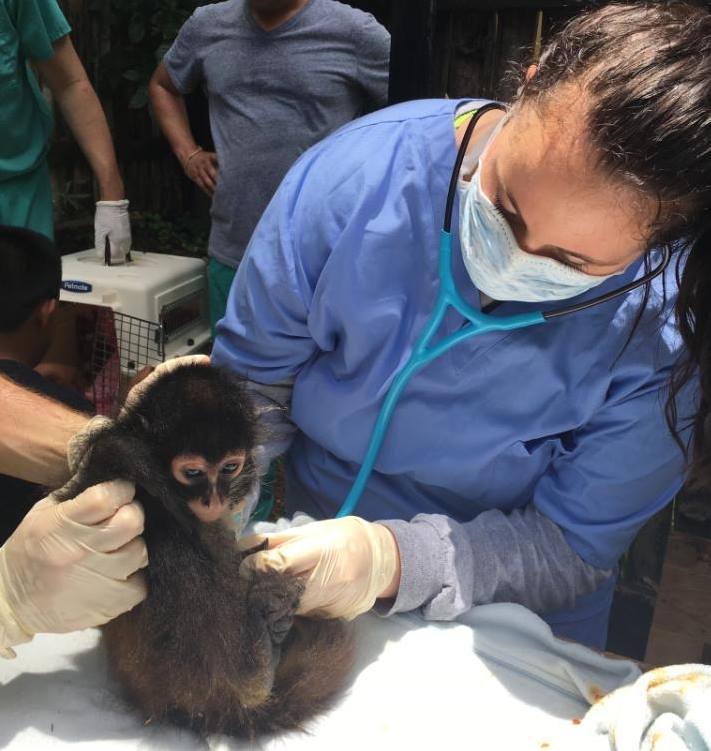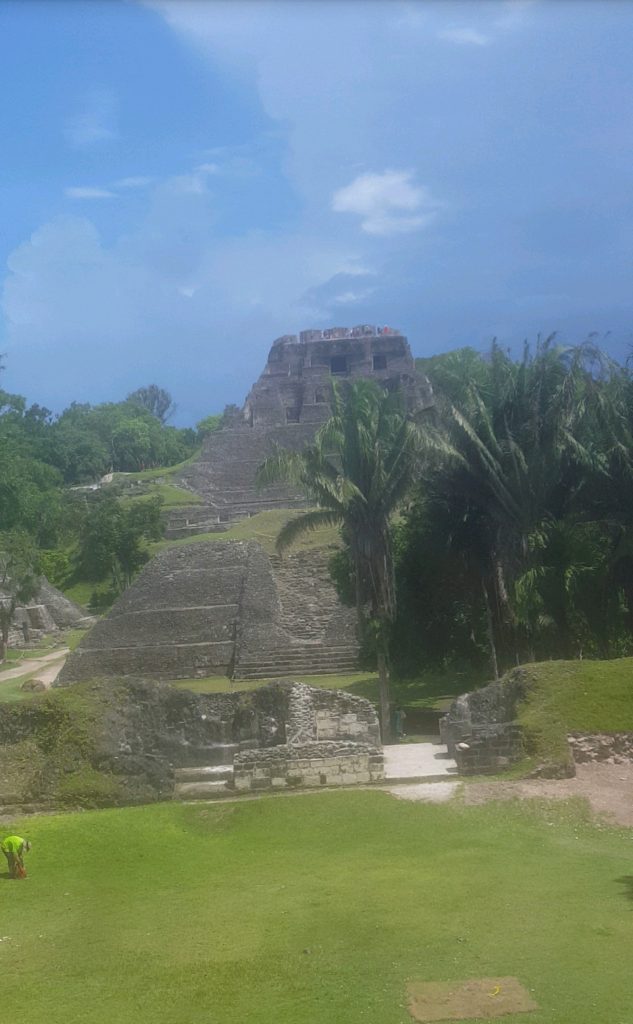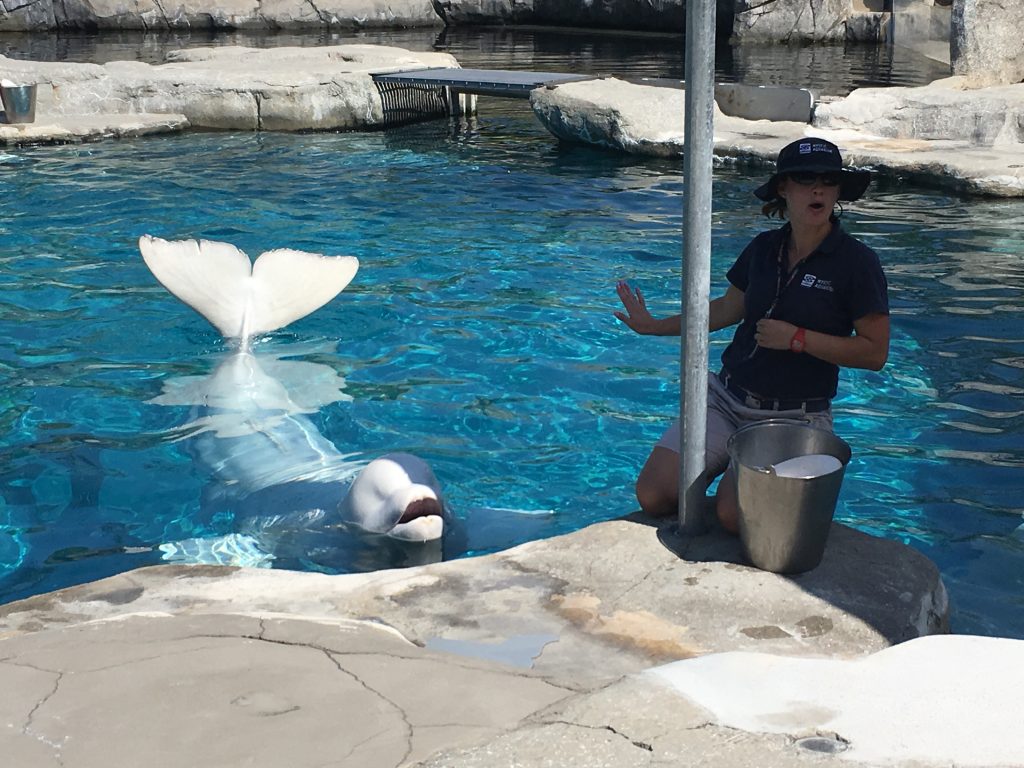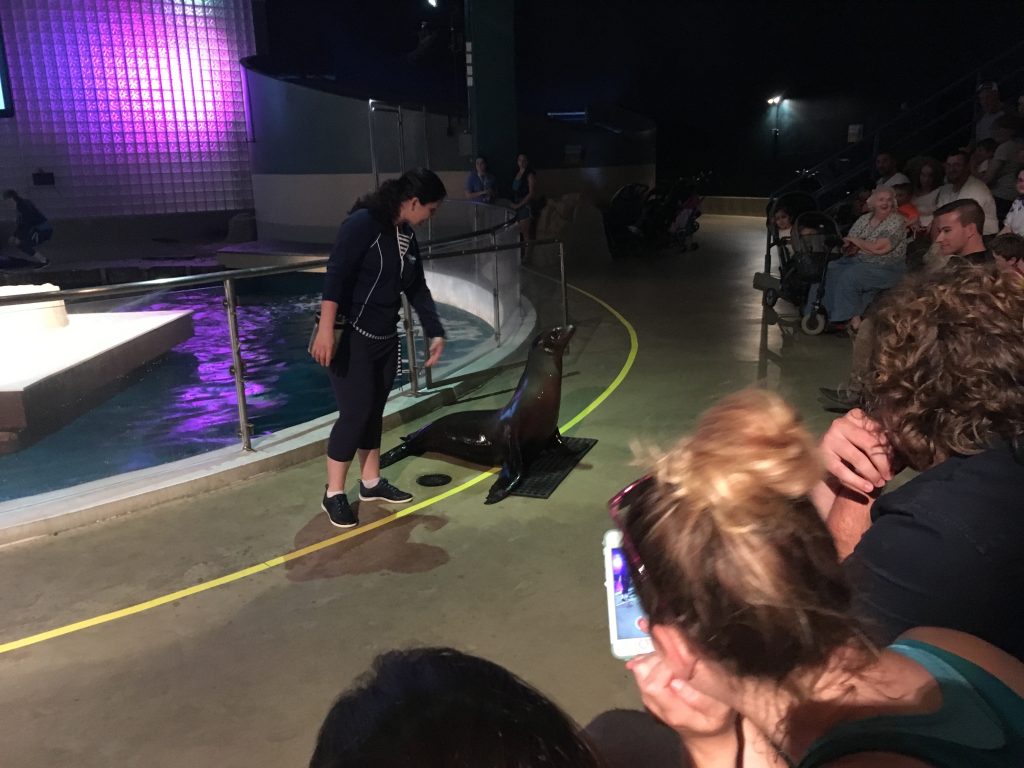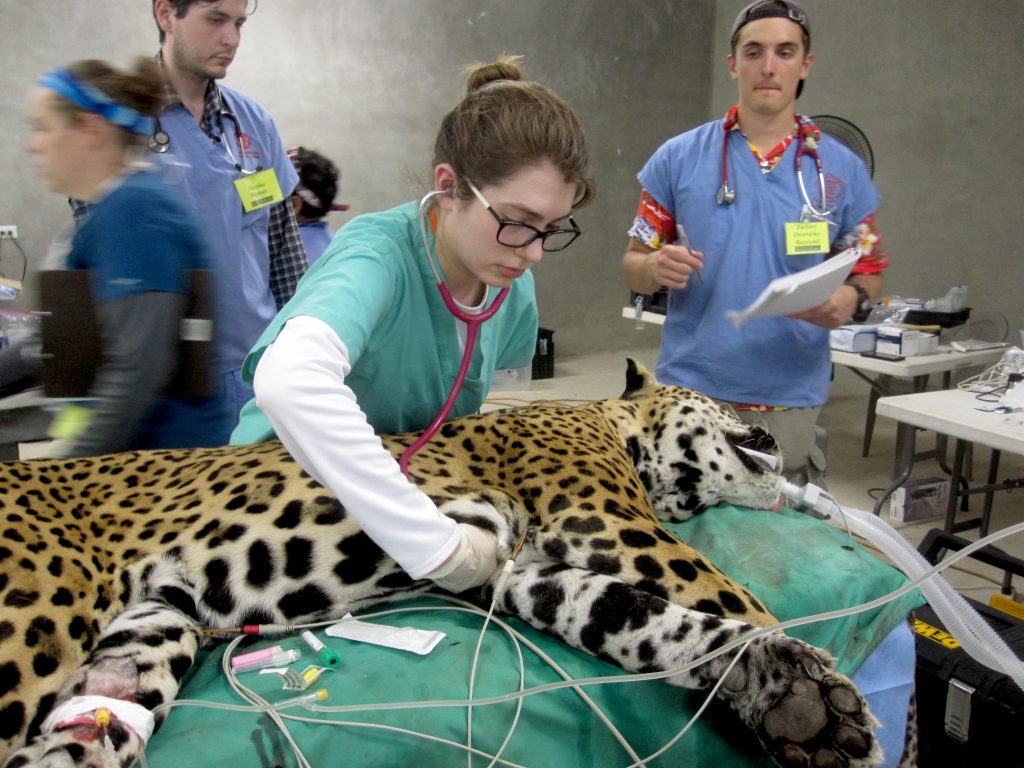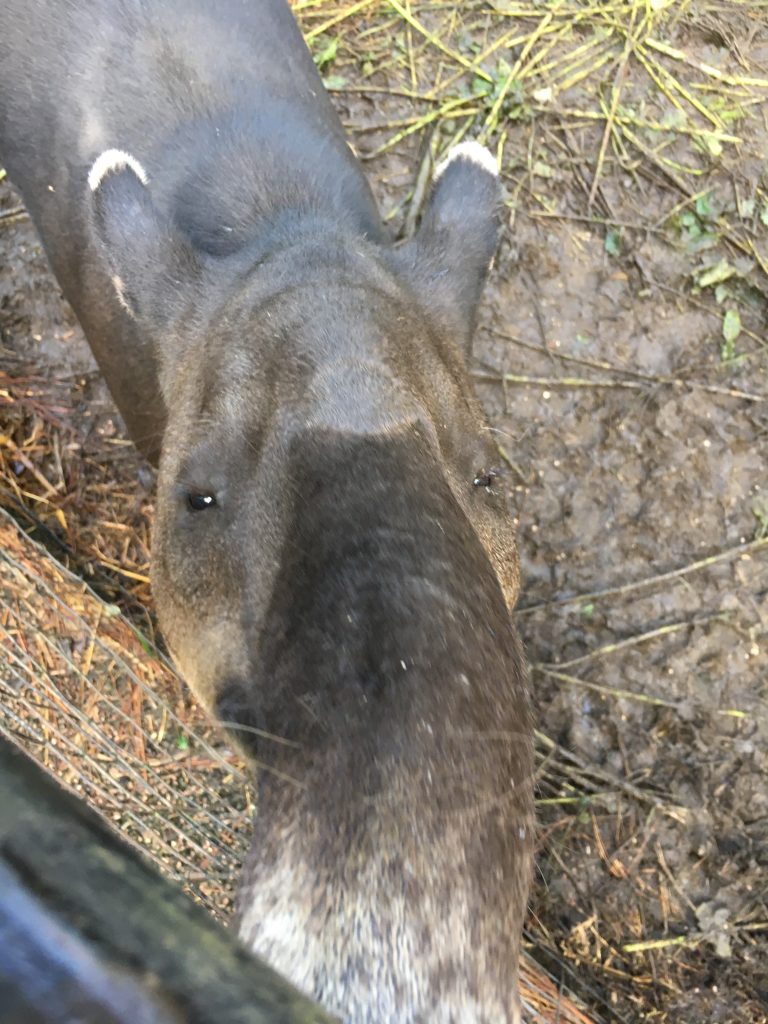 This past summer, I had the incredible opportunity of being part of the Engaged Cornell Program. The program, run by Dr. Robin Radcliffe, follows his spring course “One Health: Conservation with Communities” and pairs undergraduate and veterinary students for international experiences to learn about wildlife conservation abroad. I was selected to be on Team Indonesia, and my undergraduate and I prepared for our two- month trip by taking a jumpstart Indonesian language and culture class in the College of Arts and Sciences.
This past summer, I had the incredible opportunity of being part of the Engaged Cornell Program. The program, run by Dr. Robin Radcliffe, follows his spring course “One Health: Conservation with Communities” and pairs undergraduate and veterinary students for international experiences to learn about wildlife conservation abroad. I was selected to be on Team Indonesia, and my undergraduate and I prepared for our two- month trip by taking a jumpstart Indonesian language and culture class in the College of Arts and Sciences.
Once in Indonesia, we spent most of our time in West Java and Borneo. Although I cannot write about specifics of some of our adventures, we were able to get hands-on training from several organizations about what conservation looks like in Indonesia- from the husbandry and veterinary side of looking after rescued birds, primates, tigers, and rhinos, to logistics of releases for different species, to mitigating relationships between the government and local Dayak tribes, and even to how social media influences the local perceptions of the wildlife.
Between learning from the vets about field techniques like blow darting and making ultrasound gel from scratch, we also learned much from the keepers and staff. The people were so incredibly in tune with their surroundings, from knowing every plant’s name and properties, to adeptly climbing fifty feet up in the air to get rhino browse. They knew how far away animals must be based on how a single branch bends, saw deer tracks paces away when I can barely make them out up close, and knew exactly the best path to get us through the jungle safely. Oftentimes I was in awe to watch them work with such ease and am filled with such humility learning from masters like these.

Additionally, during our down time, Daeden my undergrad partner and I were able to develop relationships with the keepers who don’t speak much English and created some of the best memories of the trip. It was nerve wracking at first, being challenged to communicate effectively with everyone and feeling as if all our Bahasa flew out the window the second we got to Indonesia. But, rather dramatically, I found myself falling into step with life in Kelian, found myself stretching the confines of my previous world with an insatiable need to explore every aspect of this unfamiliar land. Both out of necessity and a desire to connect more deeply with the people here, I could feel my Bahasa growing with each kitchen adventure with Ibu Tini or perimeter patrol with Pa Pelis. I found each day much easier than the last as I felt myself leaning into the dynamics of Kelian and diving deeper into what life had to offer here.
Here, amongst hilarious nights of Uno and karaoke, watching tv shows that I didn’t understand and putting flour on the faces of losers of games, I was able to connect to a part of myself that I hadn’t for a long time. My mother is an immigrant from the Philippines, but I have memories of being embarrassed about being Asian because there weren’t many when I was growing up and I was scared of being different. And now, in my early twenties, I feel amorphous at times being mixed race, not knowing exactly where I can fit in as I oftentimes feel like I don’t fit the mold of mainstream society while simultaneously being disconnected from my own heritage. And I often feel as if it’s too late to connect to that part of me that I have pushed away for such a significant portion of my upbringing. But, so many of the cultural things that I grew up with were similar, from eating with my hands to having similar cooking styles and language.

So yes, I learned a lot about veterinary medicine and conservation in action in the field, but in these hours of downtime with the staff, I learned something much more valuable. I enthusiastically stepped out of my comfort zone and learned how to cook makanan Indonesia (Indonesian food) with Ibu Tini, attempted riding a motor myself, and used a machete. I learned Bahasa Indonesia, so well that I could carry conversations, make jokes, and say bad words with my guide who doesn’t understand any English. I learned how to make friends and form deep bonds even when the communication and cultural barriers seem insurmountable. Because there, the person I am is not so different from many of the people there. We shared many of the same thoughts, worries and fears, hopes and desires. The person I am finally does not feel out of place or very different (even though surface appearances would say otherwise) but in fact feels perfectly at home. Because there, with everything reminding me of my upbringing, I found a place to strengthen my identity, connect to my culture and community, and appreciate my heritage.

Hi, my first name is Christel-Remy, but you can call me Remy (she/they). I’m from West Hempstead, NY and I graduated from Cornell undergrad in Spring 2020 with a major in Animal Science and a minor in Education. I hope to pursue a career in wildlife conservation medicine, but I also love academia! Within vet school, I’ve had the opportunity to be involved in many clubs, most notably ZAWS and VOICE. Before I started college, I was a martial arts instructor for nine years, and I also continue to coach Science Olympiad for high school and middle school students. Outside of the veterinary field, I love ballet and tap dancing, playing piano, drawing, and collecting coffee mugs.

 There was once a time in my life when I could only dream about performing a physical exam on a sedated jaguar in the Belizean jungle, but that dream, along with many others, became a reality as a student enrolled in Dr. Noha Abou-Madi’s International Experience in Wildlife Health and Conservation course. Cornell University College of Veterinary Medicine (CUCVM) has been partnered with the Belize Zoo since 2011 to provide state-of-the-art veterinary care while simultaneously fulfilling the dreams of adventurous veterinary students looking to hone their clinical skills. After having to cancel this trip multiple times throughout the COVID-19 pandemic, Dr. Noha Abou-Madi could not be more excited to offer this course once again to those with career goals involving wildlife and zoological medicine. In this course, students travel to the Belize Zoo where they stay for a week to gain hands-on experience with various mammals, birds, and reptiles native to Belize.
There was once a time in my life when I could only dream about performing a physical exam on a sedated jaguar in the Belizean jungle, but that dream, along with many others, became a reality as a student enrolled in Dr. Noha Abou-Madi’s International Experience in Wildlife Health and Conservation course. Cornell University College of Veterinary Medicine (CUCVM) has been partnered with the Belize Zoo since 2011 to provide state-of-the-art veterinary care while simultaneously fulfilling the dreams of adventurous veterinary students looking to hone their clinical skills. After having to cancel this trip multiple times throughout the COVID-19 pandemic, Dr. Noha Abou-Madi could not be more excited to offer this course once again to those with career goals involving wildlife and zoological medicine. In this course, students travel to the Belize Zoo where they stay for a week to gain hands-on experience with various mammals, birds, and reptiles native to Belize.
 The relationship between the Belize Zoo and CUCVM is one that not only fosters students’ education and clinical skills as they pertain to zoological medicine, but also as they pertain to conservation. The Belize Zoo is highly committed to the animals within their direct care, but they also care for those that live beyond their gates. Erin Guntrum ‘25 recalls a lecture that we received highlighting the integral role that zoos play in the realm of conservation in which we learned that the Belize zoo has been purchasing land to be utilized as wildlife corridors to once again connect wild populations that have been separated by human establishments. Members of the Belize zoo are very aware that the human population is expanding and so too is development, nonetheless they are trying their best to ensure that land exists for wildlife in the future.
The relationship between the Belize Zoo and CUCVM is one that not only fosters students’ education and clinical skills as they pertain to zoological medicine, but also as they pertain to conservation. The Belize Zoo is highly committed to the animals within their direct care, but they also care for those that live beyond their gates. Erin Guntrum ‘25 recalls a lecture that we received highlighting the integral role that zoos play in the realm of conservation in which we learned that the Belize zoo has been purchasing land to be utilized as wildlife corridors to once again connect wild populations that have been separated by human establishments. Members of the Belize zoo are very aware that the human population is expanding and so too is development, nonetheless they are trying their best to ensure that land exists for wildlife in the future.


 For students looking to enter the increasingly competitive field, Dr. Radcliffe’s first suggestion is to capitalize on the opportunities we have here at Cornell Vet. “I think there’s a lot of expertise here at Cornell and there’s a lot of opportunities.” These include Engaged Cornell, Expanding Horizons, and a myriad of courses aimed at students interested in pursuing careers in zoo, wildlife, and exotics medicine. Dr. Radcliffe teaches a 3-part course called Conservation with Communities for One Health, which reflects the multi-disciplinary mindset crucial to effective conservation work. Both undergraduate and veterinary students are able to take this course, and a subset of them travel in teams to field sites in the Congo, Uganda, and Indonesia to participate in projects with institutions that Dr. Radcliffe has built relationships with over the years, including the Jane Goodall Institute and WWF-Indonesia. Coursework aside, Dr. Radcliffe encourages students to take advantage of networking opportunities and to pursue externships that excite them.
For students looking to enter the increasingly competitive field, Dr. Radcliffe’s first suggestion is to capitalize on the opportunities we have here at Cornell Vet. “I think there’s a lot of expertise here at Cornell and there’s a lot of opportunities.” These include Engaged Cornell, Expanding Horizons, and a myriad of courses aimed at students interested in pursuing careers in zoo, wildlife, and exotics medicine. Dr. Radcliffe teaches a 3-part course called Conservation with Communities for One Health, which reflects the multi-disciplinary mindset crucial to effective conservation work. Both undergraduate and veterinary students are able to take this course, and a subset of them travel in teams to field sites in the Congo, Uganda, and Indonesia to participate in projects with institutions that Dr. Radcliffe has built relationships with over the years, including the Jane Goodall Institute and WWF-Indonesia. Coursework aside, Dr. Radcliffe encourages students to take advantage of networking opportunities and to pursue externships that excite them. Colleen Sorge, Class of 2024, is originally from Long Island, NY. She graduated with a B.S. in Animal Science and a minor in English from Cornell University. She often finds herself missing her humanities courses in vet school and is thrilled she can combine her passions for writing and for veterinary medicine as the WildLIFE Blog Editor.
Colleen Sorge, Class of 2024, is originally from Long Island, NY. She graduated with a B.S. in Animal Science and a minor in English from Cornell University. She often finds herself missing her humanities courses in vet school and is thrilled she can combine her passions for writing and for veterinary medicine as the WildLIFE Blog Editor.